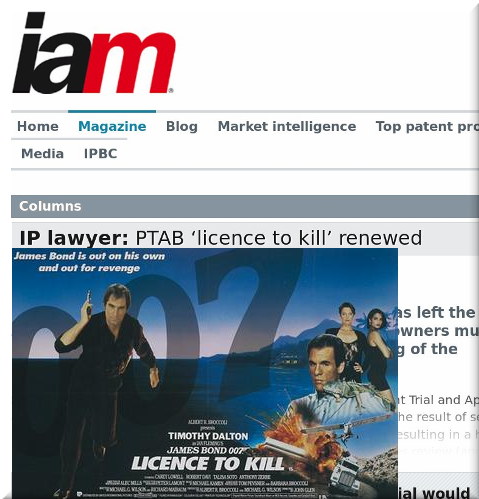

PTAB, an integral part of AIA, is incredibly popular among practicing professionals, unlike beaurocrats like lawyers who make money out of feuds (not production).
"Reports of software patents dying at CAFC or PTAB can be found every week (if not every day) because software patents are a dying breed in the US, thanks primarily to Alice."Speaking of CAFC, Patently-O writes about it this week in relation to definiteness standard. It says that "[t]he Patent Act requires that claims be written in a way that “particularly point[s] out and distinctly claim[s] the subject matter which the inventor . . . regards as the invention.” 35 U.S.C. 112(a). In Nautilus, the Supreme Court held that a patent claim survives this test only if it provides “reasonable certainty” as to the scope and bounds of the invention."
Sloppy patent applications are bound to incur the Supreme Court's (SCOTUS) wrath and one has to wonder how many shoddy patents that USPTO examiners let through the sieve are basically a worthless piece of paper.
It is apparent that many software patents are no longer valid, whether they're actually being challenged or not. Their value is close to zilch. CAFC's changing tune after SCOTUS ruled on Alice is noteworthy. We wrote about Diamond v Diehr many times over the years, e.g. [1, 2, 3, 4].
Reports of software patents dying at CAFC or PTAB can be found every week (if not every day) because software patents are a dying breed in the US, thanks primarily to Alice. ⬆